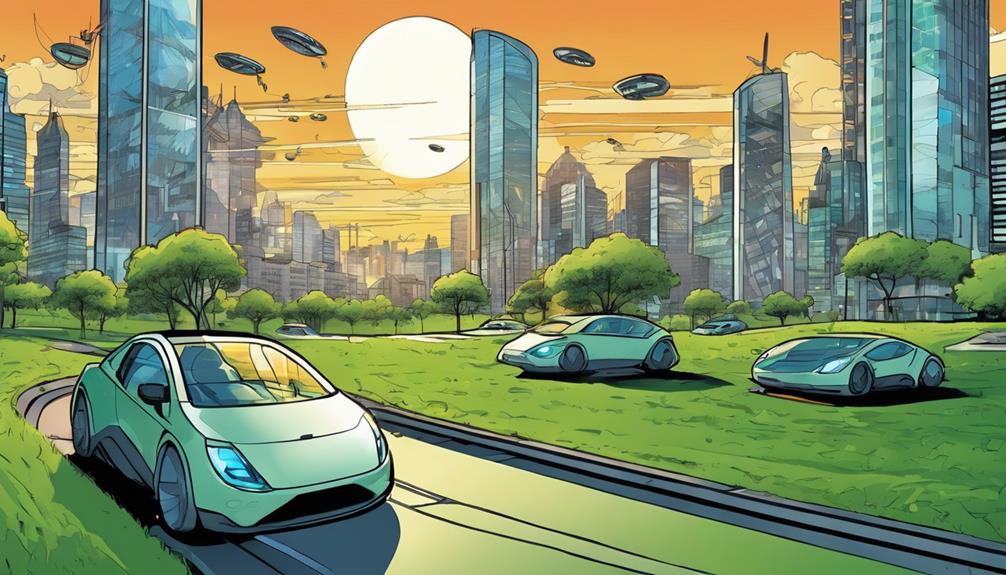As I explore the impact of solar energy on communities, I'm struck by its empowering effects. It breaks free from energy poverty, providing reliable and affordable electricity, reducing energy costs, and creating job opportunities. Solar energy also enhances access to education, healthcare, and income for women. It's an efficient and integrated energy solution, reducing air pollution and combating climate change. I'm inspired by the potential of solar energy to create a brighter future, and I'm excited to learn more about how it's making a difference in communities around the world.
Key Takeaways
- Solar energy breaks free from energy poverty, providing reliable and affordable electricity, reducing energy costs, and creating job opportunities.
- Efficient and integrated solar energy solutions combat climate change, reduce air pollution, and enhance student engagement and understanding.
- Education and awareness initiatives empower students to take action, overcome economic and social obstacles, and inspire a new generation of innovators.
- Government support and investment in solar energy create jobs, boost local economies, and make solar energy more affordable and accessible through policies.
- Solar energy enhances access to education, healthcare, and income for women, promoting a brighter future for communities.
Solar Energy and Empowerment Benefits
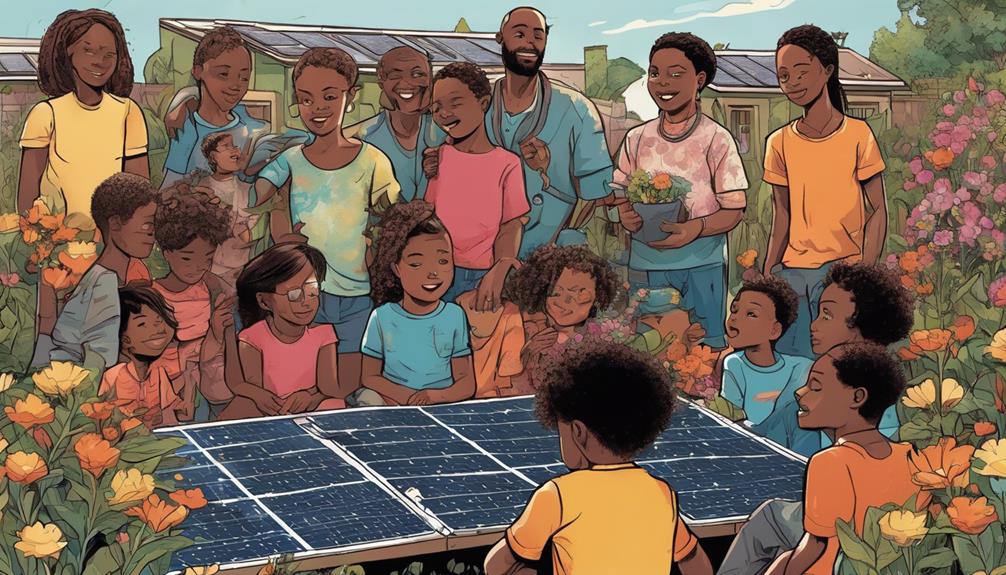
By harnessing the power of solar energy, communities can break free from the shackles of energy poverty, revealing a multitude of empowerment benefits that transform lives and foster sustainable development.
I've seen it firsthand – solar energy provides reliable and affordable electricity, reducing energy costs and creating job opportunities. It's a game-changer for women, enhancing their access to education, healthcare, and income generation.
Solar energy also promotes environmental responsibility, reducing dependence on expensive and polluting sources. As a result, communities can invest in their future, creating a brighter tomorrow.
Efficient and Integrated Energy Solution
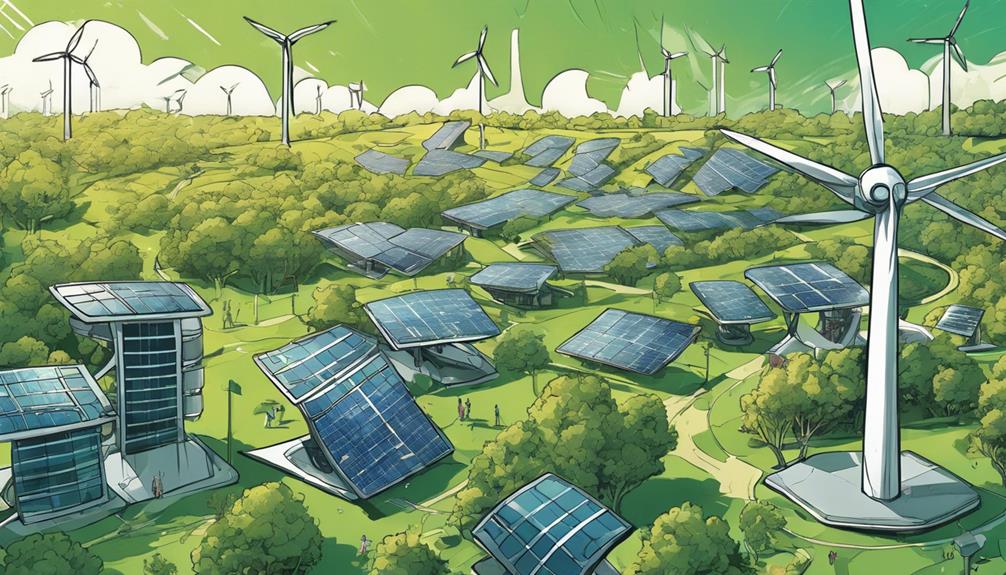
I've witnessed how solar energy's efficiency and reliability make it an attractive solution for communities seeking a sustainable future. As a clean and renewable source of power, solar energy reduces air pollution and combats climate change.
Integrating solar energy into our daily lives is essential, and I believe it can be achieved through education and awareness. By incorporating solar energy into the curriculum, we can enhance student engagement and foster a deeper understanding of sustainable practices.
Additionally, promoting renewable energy awareness through workshops and social media platforms can drive sustainable development initiatives. With advancements in technology, solar panels have become more cost-effective, making it an affordable option for homeowners and businesses.
Education and Awareness Initiatives

As I explore the world of solar energy, I'm struck by the importance of education and awareness initiatives. Through hands-on activities like constructing solar-powered devices, students gain practical experience and develop critical thinking skills, fostering a deeper comprehension of sustainable practices. By integrating solar energy into the curriculum, we can inspire a new generation of innovators and environmental stewards.
Here are just a few reasons why education and awareness initiatives are essential:
- Empowering students to take action: By educating students about solar energy, we provide them with the tools to make a difference in their communities.
- Fostering a sense of responsibility: By teaching students about the environmental advantages of solar power, we instill a sense of duty to preserve the planet.
- Breaking down barriers: By promoting renewable energy awareness, we can overcome economic and social obstacles to solar energy adoption.
Overcoming Adoption Challenges

My journey into the world of solar energy has highlighted the pressing need to overcome adoption challenges, which hinder widespread access to this clean and sustainable power source.
One major obstacle is economic disparity, as low-income communities and developing countries struggle to afford solar panels. Lack of knowledge and limited community engagement also pose significant barriers.
To address these challenges, community partnerships, education, and financial support are necessary. Governments can play a pivotal role by providing incentives and policies that make solar energy more accessible.
Government Support and Investment

As I explore the world of solar energy, I'm struck by the significant impact of government support and investment. Government policies and incentives have played a crucial role in driving the adoption of solar energy, making it more affordable and accessible to a wider population.
Here are just a few ways government backing has made a difference:
- 10,000+ jobs created in the solar industry, providing a livelihood for thousands of families
- $10 billion invested in renewable energy projects, boosting local economies and stimulating growth
- 50% reduction in energy costs for businesses and households, freeing up resources for other essential needs
Economic and Environmental Impact
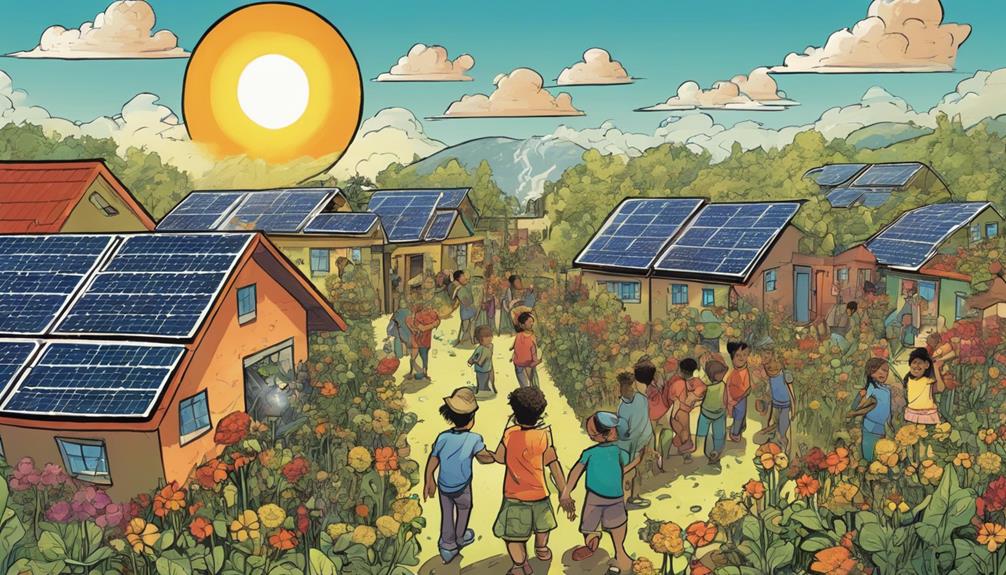
Boosting local economies and reducing carbon footprints, solar energy's economic and environmental impact is a game-changer for communities worldwide. As I've seen firsthand, solar energy adoption creates jobs, stimulates local economies, and reduces energy costs for households and businesses. This, in turn, reallocates savings to other essential needs, uplifting individuals and communities economically.
Additionally, solar energy's clean and sustainable nature reduces greenhouse gas emissions, mitigating the devastating effects of climate change. By embracing solar energy, we're not only empowering communities but also preserving our planet for future generations. It's a win-win situation, and I'm excited to see the continued growth and impact of solar energy on our economy and environment.
Communities in the Spotlight
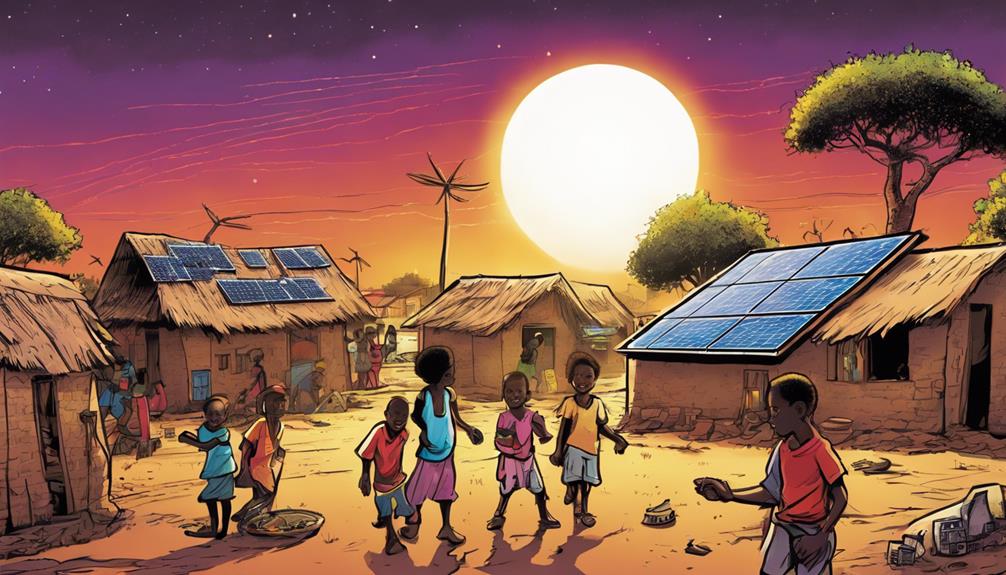
As I explore the world of solar energy, one remarkable community that stands out for its innovative approach to solar energy adoption is the rural town of Sunshine Valley, where residents have come together to create a thriving solar-powered economy.
This community's dedication to renewable energy hasn't only reduced their carbon footprint but has also brought numerous benefits to its residents.
Here are just a few ways Sunshine Valley is shining bright:
- Energy independence: Residents have reduced their dependence on expensive energy sources, saving money on their electricity bills.
- Job opportunities: The solar industry has created new job opportunities in manufacturing, installation, and maintenance, boosting the local economy.
- Improved healthcare: The clean energy has also led to enhanced air quality, resulting in better health outcomes for the community.
A Sustainable Future Ahead

By embracing solar energy, we're not only mitigating the threats of climate change but also paving the way for a sustainable future where generations to come can thrive. As we shift to renewable energy sources, we're creating a better world for ourselves and future generations. Here's a snapshot of what a sustainable future with solar energy looks like:
| Benefits | Impact |
|---|---|
| Reduced air pollution | Improved public health |
| Job creation | Economic growth |
| Energy independence | Reduced energy costs |
| Environmental sustainability | Preserved natural resources |
With solar energy, we're not just reducing our carbon footprint, we're also creating a more sustainable and equitable future. By investing in solar energy, we're investing in a brighter future for all.
Frequently Asked Questions
How Does Solar Energy Impact Local Food Production and Agricultural Practices?
"I've seen how solar energy positively impacts local food production and agricultural practices by providing reliable power for irrigation, refrigeration, and lighting, increasing crop yields and reducing post-harvest losses, ultimately enhancing food security."
Can Solar Energy Be Used to Power Electric Vehicles in Rural Areas?
"I believe solar energy can power electric vehicles in rural areas, providing a sustainable and reliable source of energy, reducing dependence on fossil fuels, and promoting eco-friendly transportation solutions."
What Role Do Local Governments Play in Promoting Solar Energy Adoption?
As I drive through rural towns, I notice a surprising coincidence – solar panels on rooftops. It's no accident; local governments play a crucial role in promoting solar energy adoption by offering incentives, streamlining permits, and investing in infrastructure.
How Do Solar Energy Projects Address Energy Storage and Grid Stability Concerns?
I believe solar energy projects address energy storage and grid stability concerns by integrating advanced energy storage systems, like batteries, and smart grids that manage variable renewable energy output, ensuring a reliable power supply.
Are There Any Initiatives to Recycle and Repurpose Retired Solar Panels?
As I gaze upon my trusty ol' pocket watch, I ponder the fate of retired solar panels. Fortunately, initiatives like recycling programs and repurposing them into new products, like building materials, are gaining traction.
How Does Solar Energy Contribute to Outdoor Adventures and Community Empowerment?
Solarpowered outdoor adventures offer a sustainable way to explore the great outdoors. With portable solar panels, adventurers can power their devices and stay connected while minimizing their impact on the environment. Additionally, community empowerment is achieved through access to affordable and reliable solar energy solutions for off-grid communities.
How is Solar Energy Empowering Communities in Sunny Paradises?
Communities in sunny paradises are being empowered by solar power innovations in sunny paradises. With an abundance of sunlight, these areas are harnessing the power of the sun to generate clean, renewable energy. This sustainable solution is reducing reliance on traditional energy sources and providing economic and environmental benefits.
Conclusion
As I wrap up this ode to solar energy, I'm left wondering: what's holding us back from harnessing its full potential? Is it the fossil fuel industry's death grip on our throats or our own laziness?
Either way, it's time to wake up and smell the solar panels. The future is bright, literally, and it's up to us to seize it.
So, let's ditch the excuses and get powered up – our planet (and our conscience) will thank us.



